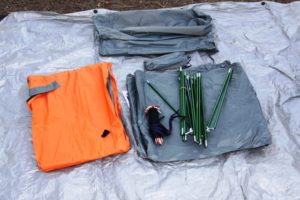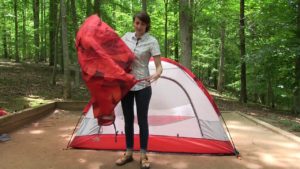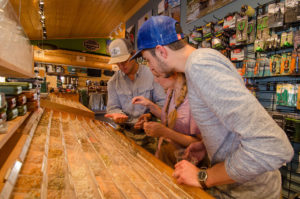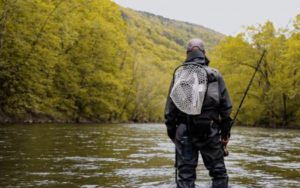Pulling up to that small patch of open land in the middle of the forest can be riveting. You open the car door to the smells of damp Earth, evergreen, perhaps even remnants of a campfire. The sun sparkles through the trees and you think “this is what they mean by the great outdoors”. You may even begin to wonder why you don’t camp more often, until you remember– we have to set up that darned tent.
Setting up a tent can be frustrating. Whether it is your first time spending the night outdoors, you’re introducing your kids to the wilderness, or you are hoping to avoid a fight on that romantic outdoor getaway, we have all the tips to setting a tent without tearing your spirts down.

- Take a Deep Breath
Look around, remember where you are. Perhaps you are here to reconnect with nature and relax, or are maybe getting a good nights rest before a pack day of oudoor adventures. Either way, this tent is your home for the night. Setting it up can be a headache, but with your goals in mind, the process an go smoothly. Take a deep breath of mountain air and get ready to roll.

- Delegate
Before even toughing the tent, it might be a good idea to assign roles to everyone in your camping party. Tents rarely require more than two people to assemble so there is no need to over complicate it. If you have little ones running around or extra friends along for the ride, suggest they collect sticks around the campsite to start a fire later or have them unload the car to distract them. Now that it is just you and a partner, or if you are taking on this task solo, you can focus in on what needs to get done.

- Locate all Items Needed for Tent Assembly
Tents typically include a ground mat, the tent itself, tent poles, a rain tarp, steaks, and instructions. Locate each of these items and lay them out in an easy to access location so you don’t have to scramble for them when you need them. Laying them out beforehand can help eliminate stress when each item needs to go into the tent.

- Get Down to Building
This is where those instructions will come in handy. Read them over once and then keep them nearby for reference. Generally, assembling a tent will involve setting down the ground mat, laying down the tent, inserting the tent polls, attaching the rain tarp, and securing the tent with steaks. However, each tent is unique and may have its own specific requirements. Remember, it is okay to rely on instructions or even a how-to site like WikiHow’s How to Set Up a Tent (With Pictures). When frustration arises, check back in with your instructions to get the job done.

- Celebrate Your Accomplishment
For many of us, setting up a tent is no simple feat. Whether the process went smoothly or had some bumps along the way, don’t forget to pat yourself on the back. If you set the tent up with a partner, thank them for their work. Now that the worst of it is over, you can sit back, roast some marshmallows, and crack open a beer by the fire. Relax, you’re camping now!















